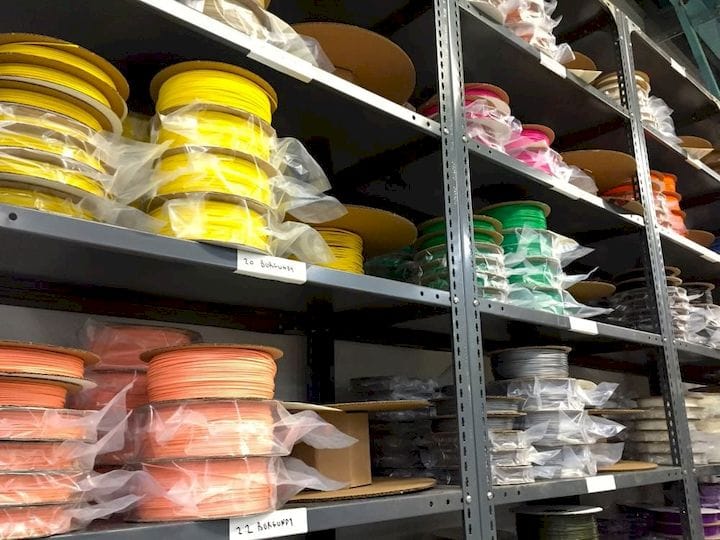![Stacks of 3D printer filament at a thermoplastics manufacturer [Source: Fabbaloo]](https://fabbaloo.com/wp-content/uploads/2020/05/image-asset_img_5eb097bf53db0.jpg)
A research report indicates tremendous growth in the 3D printer filament market in coming years.
Filament is the most popular material used in 3D printing today, simply because it is the format required for the most popular 3D printing process used: filament extrusion.
This technology was developed by Stratasys back in the 1980s, with their initial patents expiring starting in 2009. This legally opened the possibility of new companies using that very technology in their own equipment.
What was perhaps not expected was the introduction of very inexpensive desktop equipment. At that time 3D printers of any type cost near US$100K and required expensive proprietary materials. But companies like MakerBot pioneered the notion of inexpensive desktop equipment that carried pricing of only US$1K, far lower than the standard of the day.
After an initial rush of interest by consumers towards the idea of “home 3D printing”, hopes faded and many early desktop 3D printer companies failed. Those that survived pivoted their businesses towards new markets, most notably being the professional 3d printer market. This market segment contains engineers, prototypers, designers and architects, and has proven quite popular and profitable for manufacturers of professional desktop 3D printers.
That growth has been significant, and along with the sales of the equipment has come sales of associated materials. The growth has attracted the interest of several large-sized chemical companies, those who produce the thermoplastics used in 3D printing filaments. In the past couple of years we’ve seen very significant investments and ventures into 3D printing by the likes of BASF, SABIC, Mitsubishi and other major chemical companies.
But how much growth is expected? An industry report from AMECO suggests we may see a rise from the 2017 sales level of US$255M to an astonishing US$1.2B in 2024, only five years away. This represents a compound annual growth rate of 25%.
Although “only” 25% might seem to be a small growth rate in the 3D printing industry, where smaller companies often double in size annually if they can produce competent products, that is a spectacular growth rate for traditional industries.
Industries like the chemical producers, for example.
These highly competitive players have battled each other for years in traditional application spaces, and that competition moderates their potential growth rates. But what if there were another market that was unexploited? One that could provide massively larger growth?
That’s why BASF and others are so keen to get involved in the 3D printer market, even when the current size of the industry is so much smaller than the current markets addressed by the chemical industry.
It’s because they see huge potential for growth, and that’s exemplified in the estimates from AMECO. Remember, these chemical operations in some cases are many decades old; they look for long-term growth. It is likely true their strategists are peering far beyond a mere five years, but instead forecast even further out. Those future years will no doubt hold even larger market sizes.
All for the taking, but only if you start now. And that’s what they’re all doing.
Via AMECO












1 comment
Comments are closed.